Kashmir: A wounded paradise
The natural beauty of Kashmir may be unrivalled, but it is a place littered with checkpoints and graveyards.
![Kashmir stone thrower, Indian soldiers [Showkat Shafi]](/wp-content/uploads/2011/08/201182125751581734_20.jpeg?resize=570%2C380&quality=80)
Published On 5 Aug 2011
It is a place of soaring mountains, gushing rivers and green meadows considered a utopia by those who visit. But for residents, Kashmir is a place of injustice, death and destruction. It is a wounded paradise where orphanages, military checkpoints and “martyrs'” graveyards disfigure the landscape.
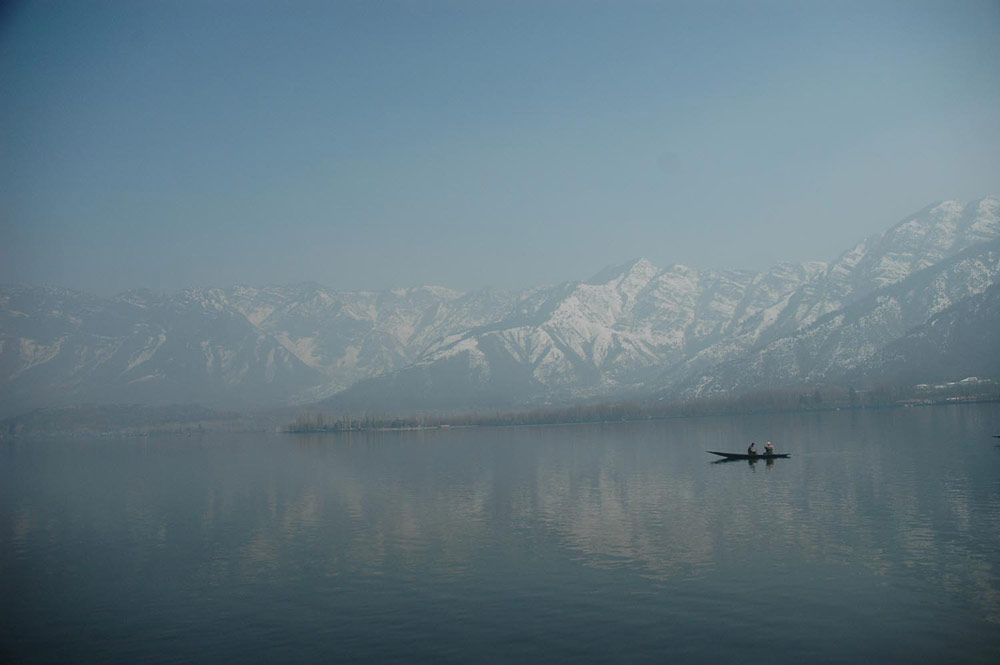 |
| 1) Dal Lake is a popular destination among those visiting the Kashmir Valley. But with the eruption of the insurgency in 1989, tourism declined dramatically. In recent years, however, the number of people visiting the region has begun again to climb [Showkat Shafi] |
 |
| 2) The Old City of Srinagar, the capital of Indian-administered Kashmir, has historically been a stronghold for those opposed to Indian rule and has come under siege from Indian forces several times in the past 20 years of conflict [Showkat Shafi] |
 |
| 3) Women offer prayers at Srinagar’s politically important Grand Mosque. Post-traumatic stress disorder is thought to be on the rise among Kashmiri women [Showkat Shafi] |
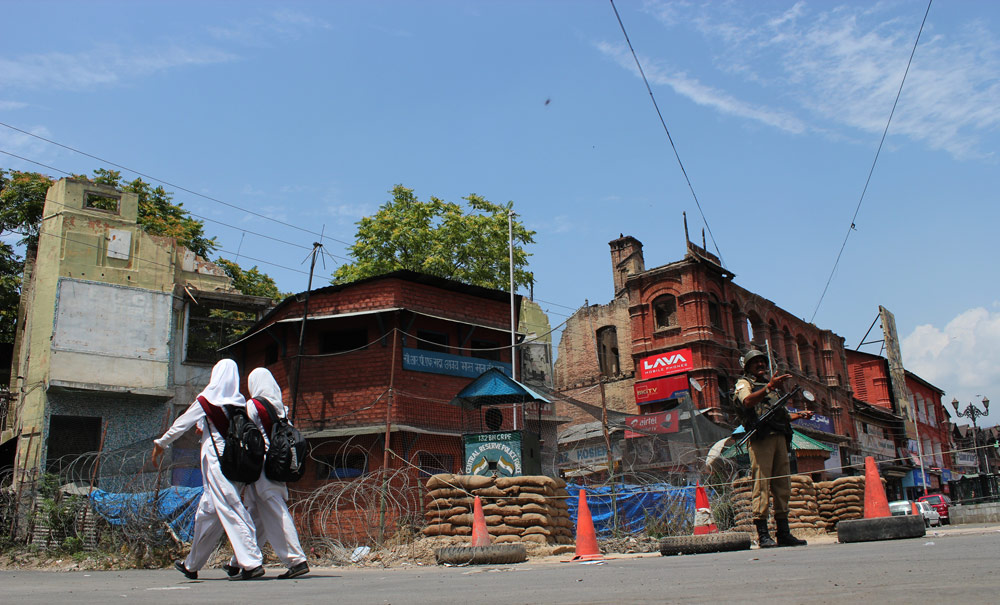 |
| 4) Indian soldiers stand guard outside a military camp located inside a cinema in the commercial district of Srinagar [Showkat Shafi] |
 |
| 5) Children walk towards their home in Kunan Poshpora village in the Kupwara district, where, according to human rights organisations, at least 31 women – some put the figure as high as 100 – were gang-raped by Indian soldiers on February 23, 1991. Civil rights groups say the Indian army has systematically used rape as a weapon of war in Jammu and Kashmir [Showkat Shafi] |
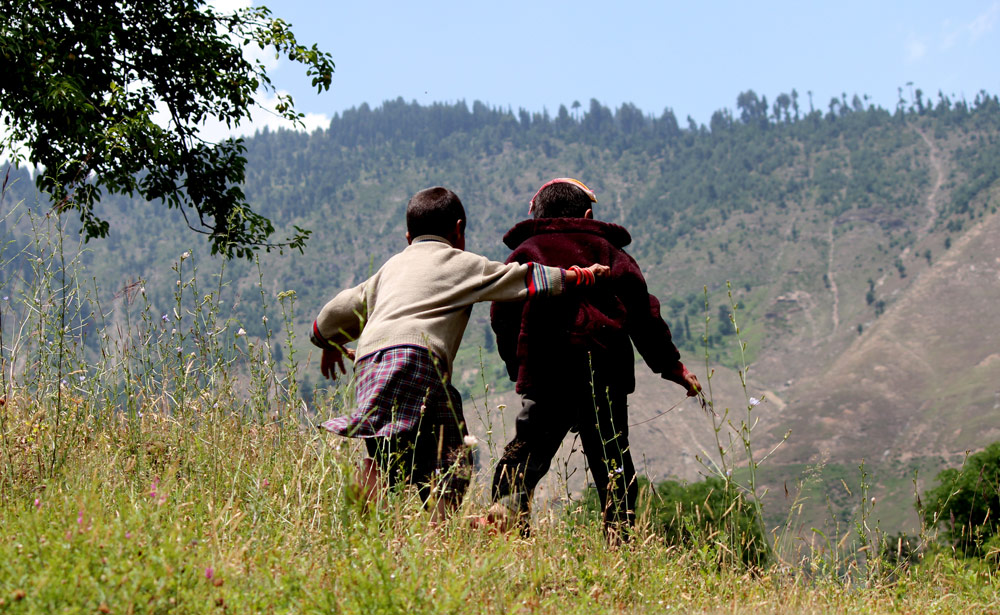 |
| 6) Two children play in a field near Dardpora village in the Kupwara district. Almost the entire male population of the village was killed during the early years of the conflict [Showkat Shafi] |
 |
| 7) The entrance to the Lolab valley in northern Kashmir. The area was a rebel stronghold until the year 2000, but it is now controlled by the Indian army who close the gate after dusk to stop any civilian movement into or out of the valley [Showkat Shafi] |
 |
| 8) The ruins of a hotel in Srinagar, where two rebels fought a 22-hour gun battle with Indian forces in early 2010 after they attempted to penetrate a military camp on the other side of the road [Showkat Shafi] |
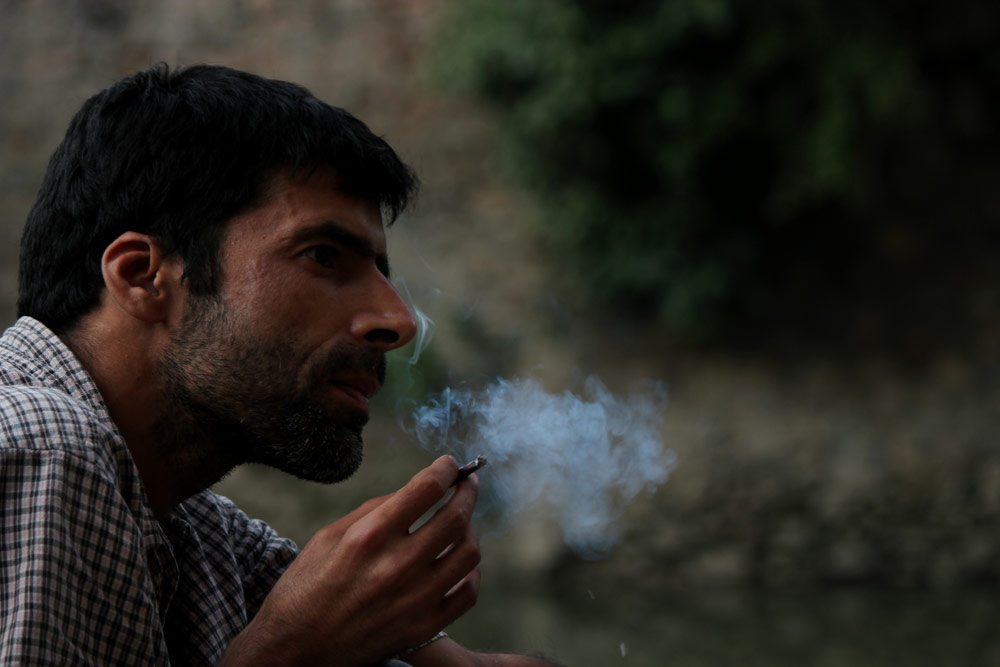 |
| 9) Gulzar Ahmad Dar used to be a member of the Jammu and Kashmir Liberation Front (JKLF). He has suffered from mental illness since allegedly being tortured by Indian forces while in captivity. Medical experts say thousands of people in the valley are suffering from post-traumatic stress disorder as a result of the conflict [Showkat Shafi] |
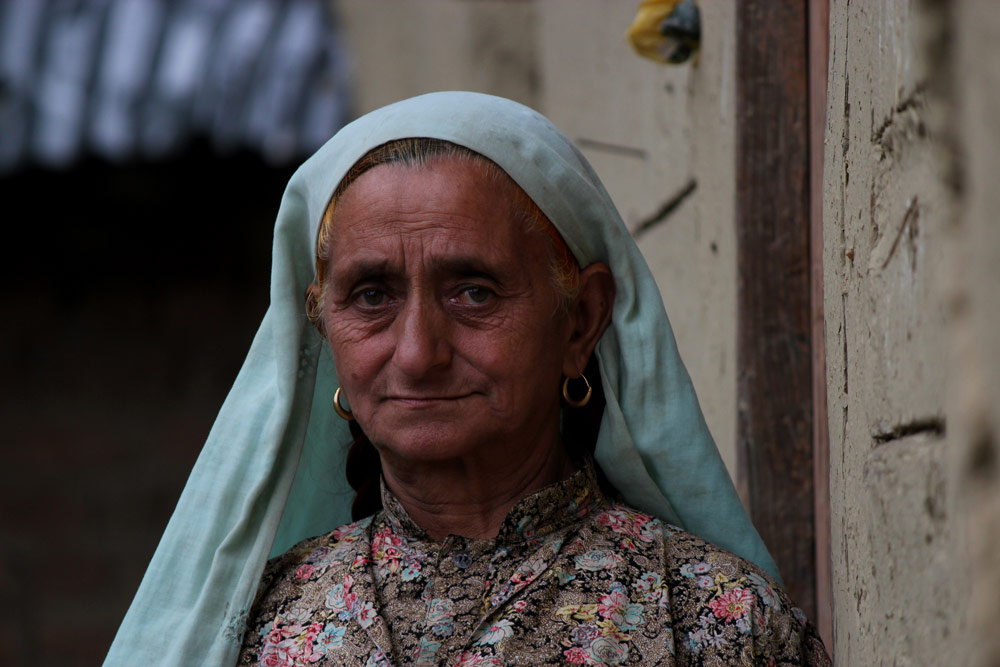 |
| 10) Shahmali Begum, the mother of Mohammad Maqbool Bhat, the founder of the JKLF who was hanged in a jail in New Delhi in 1984. Two of Begum’s other sons were killed by Indian forces, another ‘disappeared’ and a fourth remains in an Indian prison [Showkat Shafi] |
 |
| 11) Husan Bano is a member of the Association of Parents of Disappeared Persons (APDP). Her son, Sayed Anwar, is among the approximately 8,000 people who have ‘disappeared’ in Jammu and Kashmir [Showkat Shafi] |
 |
| 12) Graves of unidentified men are marked by numbers in the Kupwara district. Civil rights activists have recently claimed to have unearthed the largest unmarked mass grave in Kashmir, where more than 1,000 bodies are thought to have been buried [Showkat Shafi] |
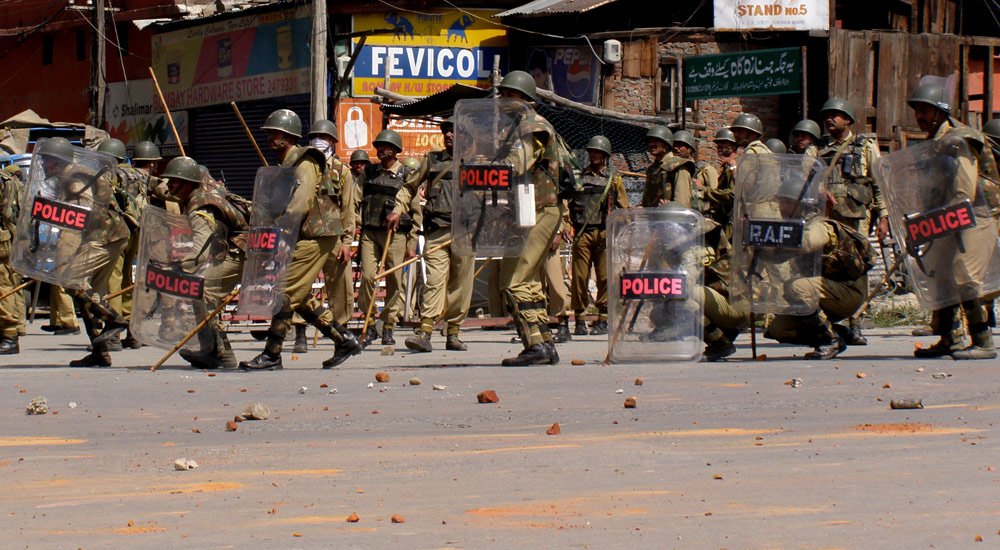 |
| 13) Indian soldiers take cover after protesters throw rocks at them during a demonstration in Srinagar [Showkat Shafi] |
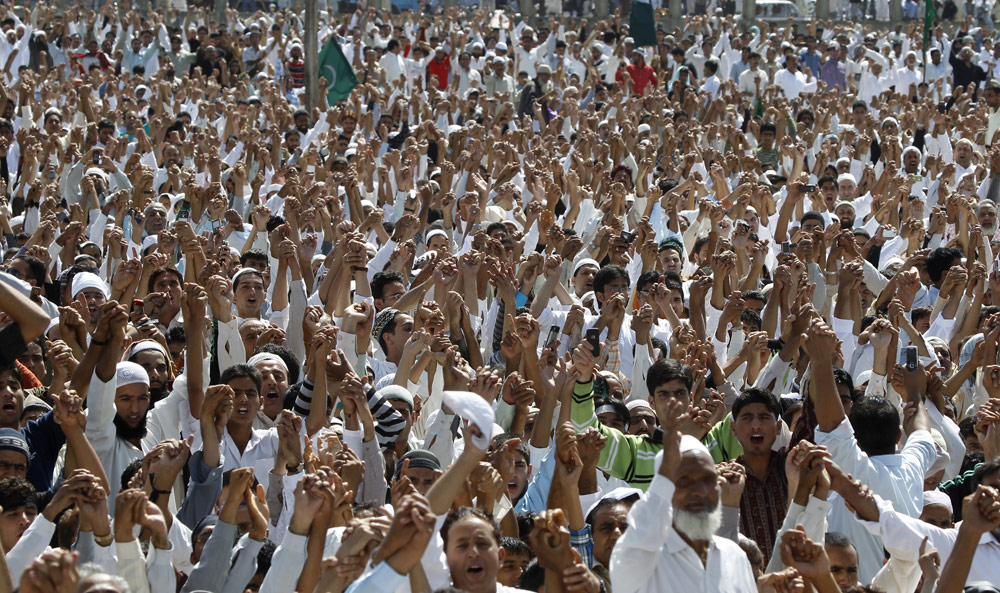 |
| 14) Kashmiris raise their hands at a rally against Indian rule in Srinagar in the summer of 2010. Protesters demanding an end to Indian rule held massive rallies in 2008 and 2010, leading to confrontations with the Indian army and severe crackdowns [Showkat Shafi] |
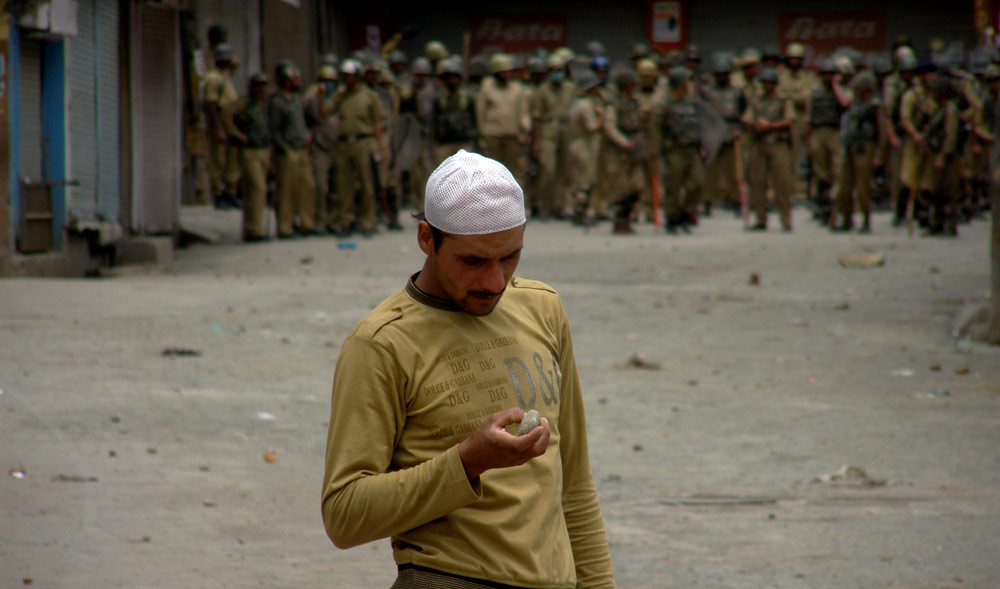 |
| 15) Analysts suggest stone-throwing has become a symbolic act of resistance employed by a new generation of Kashmiris inspired by the Palestinian intifadas [Showkat Shafi] |
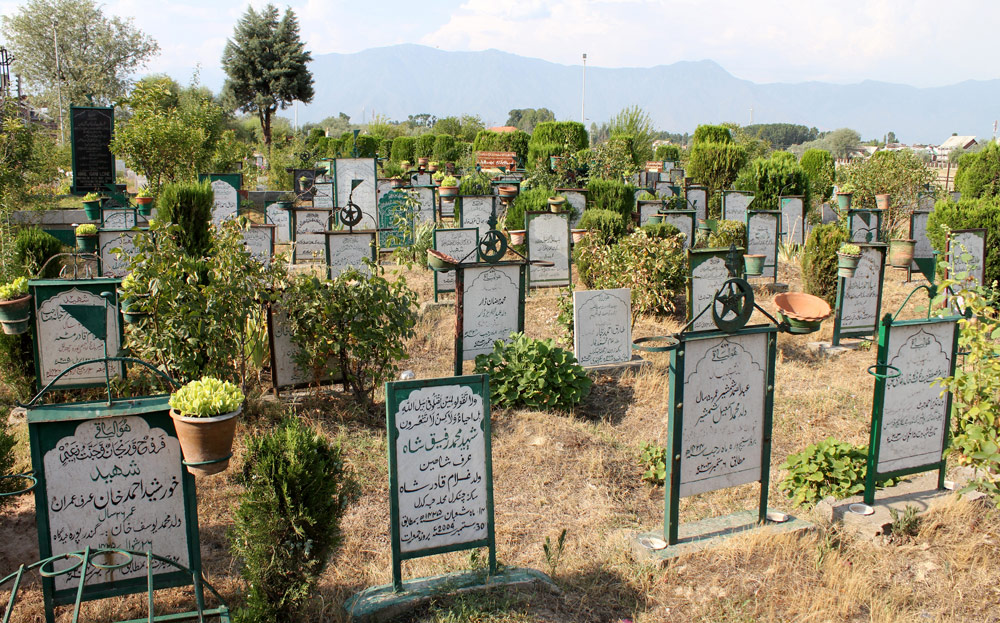 |
| 16) Bihest-e-Shuhdai-e-Kashmir, or the Paradise of the Martyrs of Kashmir, is the biggest graveyard of Muslim rebels and civilians killed by Indian forces in the past 20 years. There are an estimated 500 such ‘martyrs’ graveyards’ across the region [Showkat Shafi] |
Source: Al Jazeera